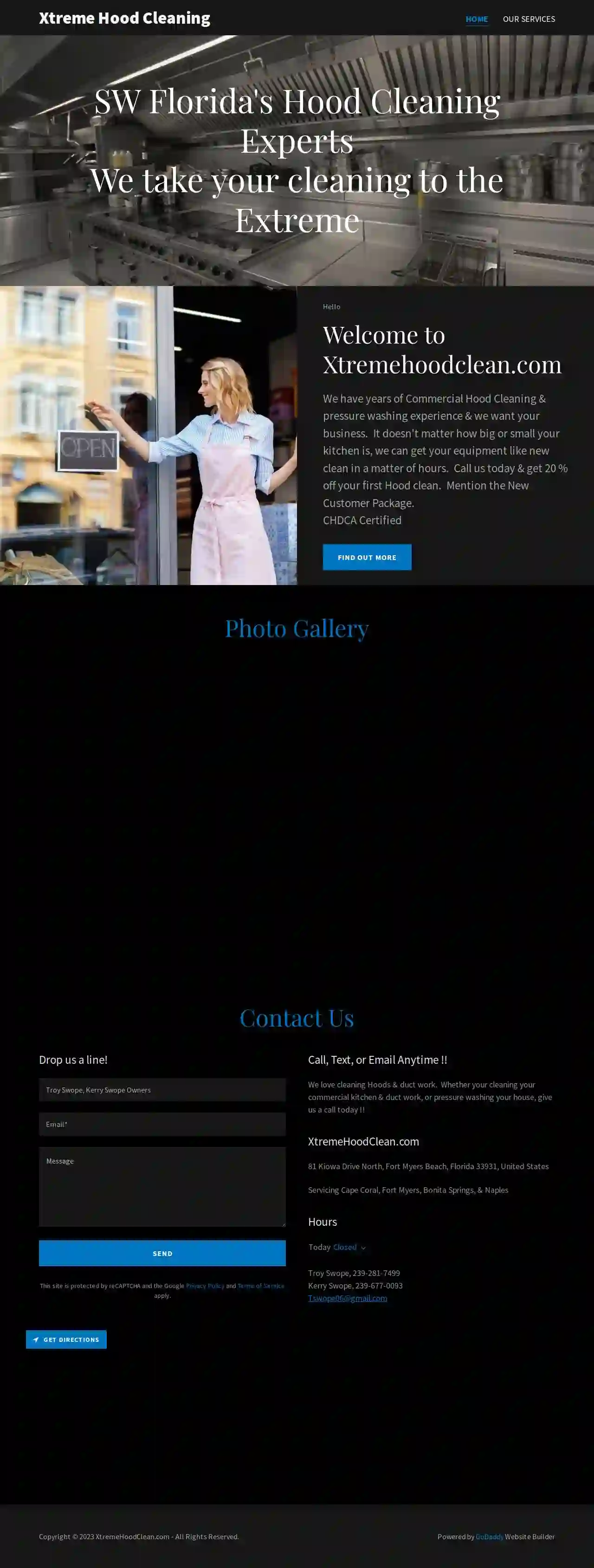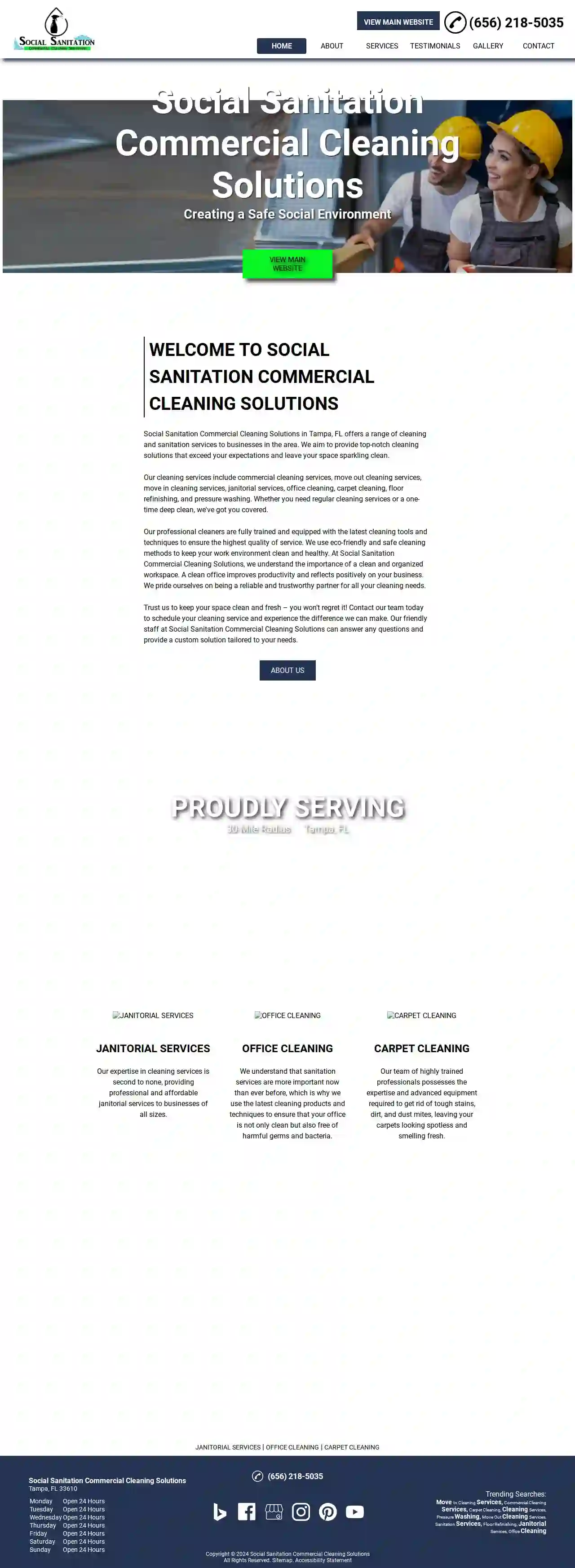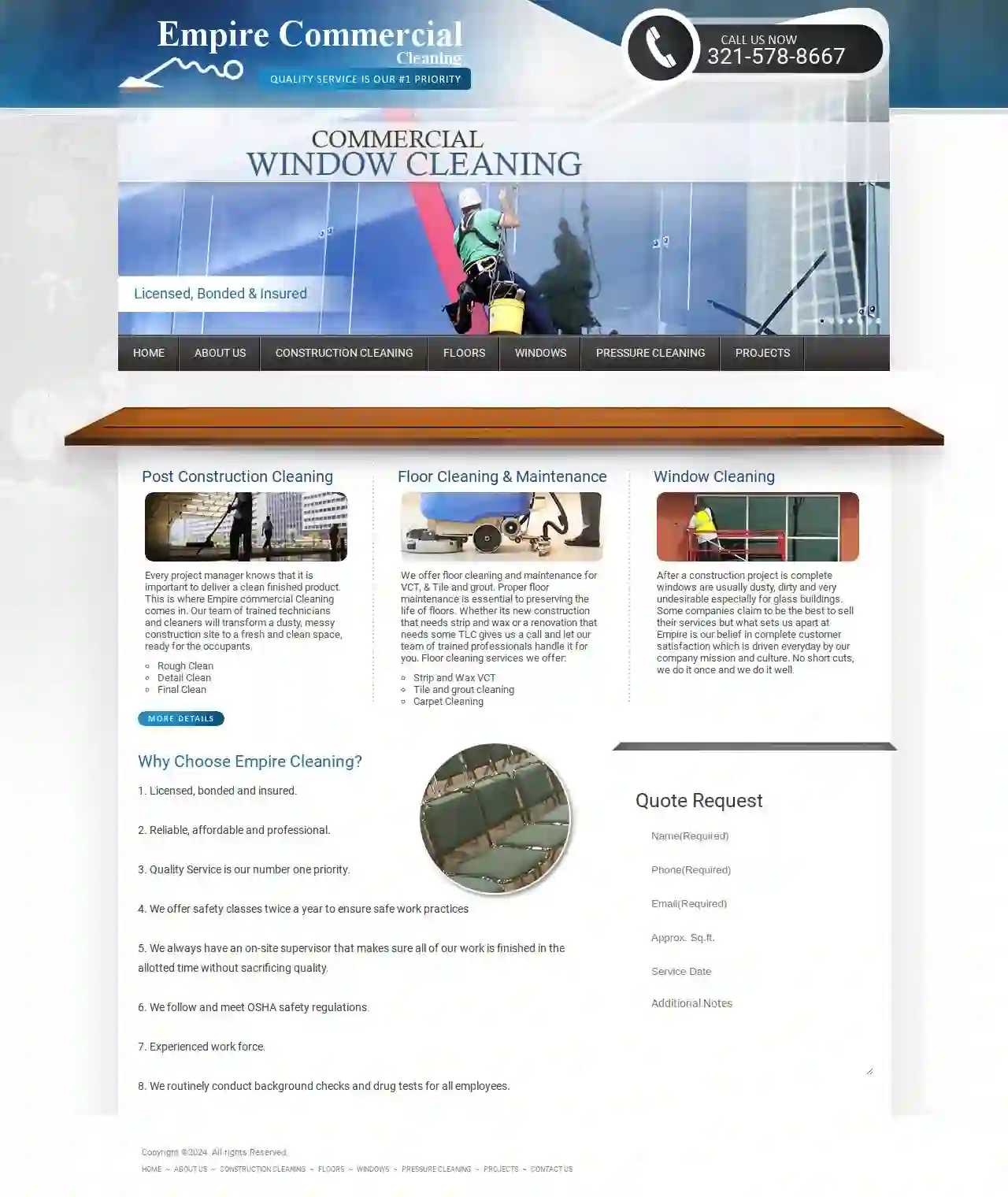Cleaning Services High Springs
Find the best Cleaning Companies in High Springs
Get multiple Residential Cleaning quotes for your project today! Compare profiles, reviews, accreditations, portfolio, etc... and choose the best service.

Miami Professional Services
514 reviewsMiami, US- Services
- Why Us?
- Gallery
Get Quote
SHARIE'MAID CLEANING
510 reviewsCitrus County, USAt Sharie'Maid Cleaning, we pride ourselves on personability, attention to detail, and the passion for loving what we do! We want your business and you deserve our service! Our goal is to work efficiently and provide you with quality service that is consistent and reliable. Our team is knowledgeable, capable, approachable, and professional. We are passionate and serious about providing you with the highest quality cleaning services that are eco-friendly and at an unbeatable price. Our services are customized to each client’s needs to ensure you are receiving the greatest benefits possible! Our promise is to provide 100% customer satisfaction.
- Services
- Why Us?
- Gallery
Get Quote
NIC GROUP INC USA
53 reviews123 Main St, Fort Myers, FL, 33901, USNIC Group Inc. is a professional multi-service company that provides leading Commercial & Residential Cleaning, Installation, and Pool Services Solutions in SouthWest Florida. We are proud to provide high-quality workmanship, affordable prices, and fully insured crews.
- Services
- Why Us?
- Accreditations
- Our Team
- Testimonials
- Gallery
Get Quote
Xtreme Hood Cleaning
52 reviews81 Kiowa Drive North, Fort Myers Beach, 33931, USXtreme Hood Cleaning SW Florida's Hood Cleaning Experts We take your cleaning to the Extreme. SW Florida's Hood Cleaning Experts We take your cleaning to the Extreme. SW Florida's Hood Cleaning Experts We take your cleaning to the Extreme. SW Florida's Hood Cleaning Experts We take your cleaning to the Extreme. Hello Welcome to Xtremehoodclean.com We have years of Commercial Hood Cleaning & pressure washing experience & we want your business. It doesn't matter how big or small your kitchen is, we can get your equipment like new clean in a matter of hours. Call us today & get 20 % off your first Hood clean. Mention the New Customer Package. CHDCA Certified Find out more Photo Gallery Contact Us Drop us a line! Troy Swope, Kerry Swope Owners Email*Send This site is protected by reCAPTCHA and the Google Privacy Policy and Terms of Service apply. Call, Text, or Email Anytime !! We love cleaning Hoods & duct work. Whether your cleaning your commercial kitchen & duct work, or pressure washing your house, give us a call today !! XtremeHoodClean.com 81 Kiowa Drive North, Fort Myers Beach, Florida 33931, United States Servicing Cape Coral, Fort Myers, Bonita Springs, & Naples Hours TodayClosed Troy Swope, 239-281-7499 Kerry Swope, 239-677-0093 [email protected] Get directions Copyright © 2023 XtremeHoodClean.com - All Rights Reserved. Powered by GoDaddy Website Builder
- Services
- Why Us?
- Our Team
- Gallery
Get Quote
Based On Solutions LLC.
51 reviewsDeltona, US- Services
- Why Us?
Get Quote
Aegean Cleaning
559 reviewsNavarre, US- Services
- Why Us?
Get Quote
Maid in Kissimmee
518 reviewsOrlando, US- Services
- Why Us?
Get Quote
Immaculate Cleaning Service
517 reviewsOrlando, US- Services
- Why Us?
Get Quote
Social Sanitation Commercial Cleaning Solutions
51 reviewsTampa, US- Services
- Why Us?
Get Quote
Empire Cleaning
51 reviewsOrlando, US- Services
- Why Us?
Get Quote
Over 60,241+ Janitorial Contractors in our network
Our janitorial contractors operate in High Springs & surrounding areas!
CleaningMatch has curated and vetted Top Cleaning Services in and around High Springs. Find the most trustworthy contractor today.
Frequently Asked Questions About Cleaning Services
- Ventilation: Open windows and turn on the exhaust fan to improve air circulation.
- Declutter: Remove any items from countertops, the shower, and the floor to allow easy access.
- Pre-treat: Spray shower walls, tub, and toilet bowl with bathroom cleaner and let it sit for a few minutes to break down grime.
- Toilet: Scrub the toilet bowl with a toilet brush, paying attention to the rim and under the seat. Wipe down the exterior of the toilet with a disinfectant wipe.
- Shower/Tub: Scrub the shower walls and tub with a sponge or scrub brush. Rinse thoroughly.
- Sink: Clean the sink with a sponge or cloth and bathroom cleaner. Pay attention to the faucet and drain.
- Mirrors and Glass: Wipe down mirrors and glass surfaces with a glass cleaner and a microfiber cloth for a streak-free finish.
- Floors: Sweep or vacuum the floor, then mop with a floor cleaner designed for your bathroom floor type.
- Finishing Touches: Empty the trash can, replace towels, and put away any toiletries.
- Prepare the Windows: Remove dust and debris from windows using a brush, vacuum, or damp cloth.
- Cleaning Solution: Use a commercial glass cleaner or a homemade solution of equal parts water and vinegar.
- Spray and Wipe: Spray the cleaning solution onto the window, ensuring even coverage.
- Squeegee Technique: Use a squeegee to wipe the cleaner from top to bottom, overlapping each stroke by about an inch. Wipe the squeegee blade clean after each stroke.
- Dry Edges: Wipe the edges of the window with a clean, dry microfiber cloth to remove any remaining moisture.
- Regular dusting: Dust frequently using microfiber cloths or a duster. Pay attention to surfaces that attract dust, such as shelves, electronics, and furniture.
- Vacuuming: Vacuum carpets and rugs regularly using a vacuum cleaner with a HEPA filter to trap dust mites and allergens.
- Air Purifier: Consider using an air purifier to remove dust particles and allergens from the air.
- Reduce Clutter: Clutter provides more surfaces for dust to settle. Declutter regularly to minimize dust traps.
- Window Treatments: Wash or vacuum window treatments, such as curtains or blinds, regularly to remove dust buildup.
- Bedding: Wash bedding, including sheets, pillowcases, and blankets, weekly in hot water to remove dust mites.
- Doormats: Place doormats at entrances to trap dirt and dust from shoes before they enter your home.
What is the best way to clean a bathroom?
By following these steps, you can maintain a clean and hygienic bathroom.
What is the best way to clean windows without streaks?
For best results, clean windows on a cloudy day or in the shade to prevent the cleaning solution from drying too quickly and leaving streaks.
How do I prevent dust from accumulating in my home?
By implementing these preventive measures, you can significantly reduce dust accumulation and maintain a cleaner and healthier home.
Do I need to provide cleaning supplies for the cleaning service?
If you have specific preferences for cleaning products, such as eco-friendly or hypoallergenic options, communicate those to the cleaning service. They may accommodate your requests or allow you to provide your preferred supplies.
What is the best way to clean a bathroom?
- Ventilation: Open windows and turn on the exhaust fan to improve air circulation.
- Declutter: Remove any items from countertops, the shower, and the floor to allow easy access.
- Pre-treat: Spray shower walls, tub, and toilet bowl with bathroom cleaner and let it sit for a few minutes to break down grime.
- Toilet: Scrub the toilet bowl with a toilet brush, paying attention to the rim and under the seat. Wipe down the exterior of the toilet with a disinfectant wipe.
- Shower/Tub: Scrub the shower walls and tub with a sponge or scrub brush. Rinse thoroughly.
- Sink: Clean the sink with a sponge or cloth and bathroom cleaner. Pay attention to the faucet and drain.
- Mirrors and Glass: Wipe down mirrors and glass surfaces with a glass cleaner and a microfiber cloth for a streak-free finish.
- Floors: Sweep or vacuum the floor, then mop with a floor cleaner designed for your bathroom floor type.
- Finishing Touches: Empty the trash can, replace towels, and put away any toiletries.
By following these steps, you can maintain a clean and hygienic bathroom.
What is the best way to clean windows without streaks?
- Prepare the Windows: Remove dust and debris from windows using a brush, vacuum, or damp cloth.
- Cleaning Solution: Use a commercial glass cleaner or a homemade solution of equal parts water and vinegar.
- Spray and Wipe: Spray the cleaning solution onto the window, ensuring even coverage.
- Squeegee Technique: Use a squeegee to wipe the cleaner from top to bottom, overlapping each stroke by about an inch. Wipe the squeegee blade clean after each stroke.
- Dry Edges: Wipe the edges of the window with a clean, dry microfiber cloth to remove any remaining moisture.
For best results, clean windows on a cloudy day or in the shade to prevent the cleaning solution from drying too quickly and leaving streaks.
How do I prevent dust from accumulating in my home?
- Regular dusting: Dust frequently using microfiber cloths or a duster. Pay attention to surfaces that attract dust, such as shelves, electronics, and furniture.
- Vacuuming: Vacuum carpets and rugs regularly using a vacuum cleaner with a HEPA filter to trap dust mites and allergens.
- Air Purifier: Consider using an air purifier to remove dust particles and allergens from the air.
- Reduce Clutter: Clutter provides more surfaces for dust to settle. Declutter regularly to minimize dust traps.
- Window Treatments: Wash or vacuum window treatments, such as curtains or blinds, regularly to remove dust buildup.
- Bedding: Wash bedding, including sheets, pillowcases, and blankets, weekly in hot water to remove dust mites.
- Doormats: Place doormats at entrances to trap dirt and dust from shoes before they enter your home.
By implementing these preventive measures, you can significantly reduce dust accumulation and maintain a cleaner and healthier home.
Do I need to provide cleaning supplies for the cleaning service?
If you have specific preferences for cleaning products, such as eco-friendly or hypoallergenic options, communicate those to the cleaning service. They may accommodate your requests or allow you to provide your preferred supplies.